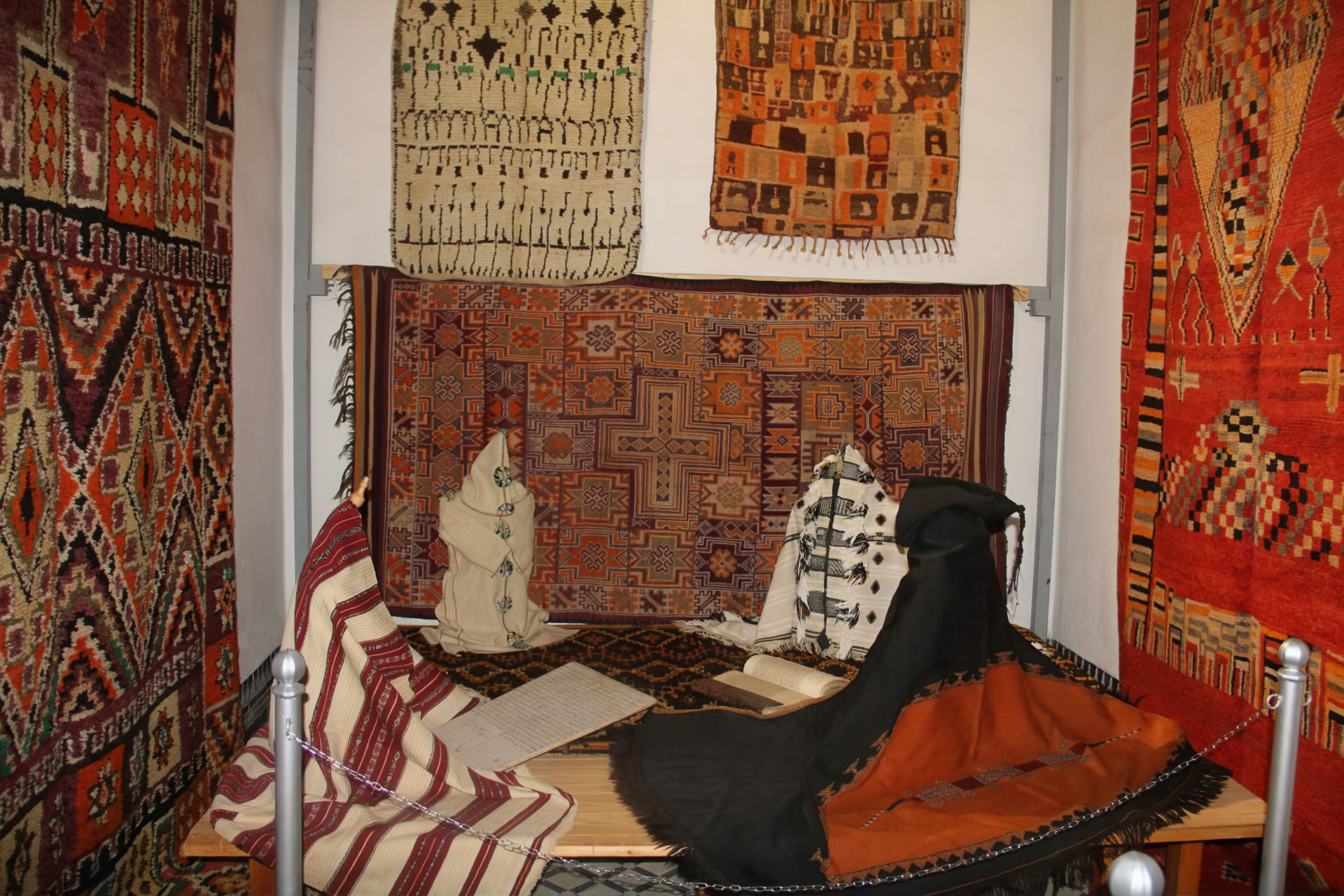Marrakech – With careful eyes and keen interest, the public is watching explanations about rare artifacts displayed in the Bahia Palace in Marrakech, one of the historical palaces that have been succeeded by many local rulers in the city, and one of the symbols of the history of power in the city and in Morocco in general.
In 3 rooms in one of the corridors of the sprawling palace, the artistic and cultural exhibits vary between clothing, furniture, textiles and manuscripts that are valuable and decorated with high craftsmanship, united by a distinctive Moroccan character.
Artistic and cultural exhibits vary between clothing, furniture, textiles and manuscripts of value and decorated with high craftsmanship (Island)
For three decades, Moroccan researcher Rabih Alwani has been collecting masterpieces of clothing, furniture and textile, belonging to what is known in local popular culture as the "Dar al-Makhzen", which is a metaphor for the residences, palaces and offices of men of power and influential people.
Rabie told Al Jazeera Net, looking closely at one of these unique pieces, that "the passion of following the masterpieces of Dar al-Makhzen and delving into the details of their manufacture was not a hobby for me as much as it is the joy of the soul, and a lifestyle in which I devoted a large part of my life to contemplating the art of Moroccan living."
Rabih Alwani Bibi has been collecting Moroccan art and heritage for 3 decades (Al Jazeera)
Rare antiques
Rabih Alwani Bibi's artifacts range from clothing, furniture and weaving, and he confirms that the oldest piece on display in the gallery is Salham (a loose Moroccan traditional garment consisting of a woolen cloak resembling a Gulf bisht) dating from the end of the 19th century, and he also has another piece dating from the beginning of the 18th century.
As a child, he recalls attending discussion sessions between his grandfather and uncle and a number of researchers on Morocco's unique cultural heritage, such as historian Hamid Triki and Dutch anthropologist Bert Flint, who loved Islamic culture and settled in Marrakech, nicknamed the "red city".
Rabih Alouani Bibi, who grew up in the "Adventist neighborhood", in the middle of a group of old neighborhoods in the eastern region of Marrakech, is passionate about heritage and aspires to become a "traveler" who visits the different regions of Morocco, scrutinizes the architecture of decorations and learns about the art of living the people of the country, and roams between public auctions in Europe, searching for "Moroccan treasures" that he recovered a number of.
Moroccan traditional salon reflects the art of living in Moroccan houses (Al Jazeera)
Thread regulator
Anyone who carefully examines the displayed pieces discovers that a thread pulls them together, showing him the beauty of the traditional art of living among rulers and dignitaries in Moroccan palaces and houses, who, thanks to their power and money, were able to produce these artifacts by skilled craftsmen, as Rabie explains.
Referring to a large carpet hanging on a wall 5.70 meters long and 3.70 meters wide, Bibi says that it was woven into a luxurious weaving, while the decorations and the type of fabric in other "warehouse clothes" show raw materials of gold threads or goat hair, or distinctive black wool, found in a single area of Morocco in the Sirwa Mountains in the southern province of Taroudant, or linen threads grown in the Beni and Rhine region in the north.
Heritage researcher Hisham Lahrash says to Al Jazeera Net that the "House of the Makhzen", or the Royal Department, played an important role, not only in preserving the traditions that were an integral part of the governance measure, but also maintained the means employed in highlighting these traditions of the Moroccan art of living, namely dress, food, architecture, and the accompanying furniture.
Hanan Labchir: The place to display artifacts is intended to allow visitors to learn about the heritage of Moroccan art of living (Al Jazeera)
Political and cultural center
Before reaching the gallery of the Bahia Palace, built by Abu Imran Musa bin Ahmed bin Mubarak Al-Sharqi Al-Bukhari, the usher of Sultan Sidi Muhammad bin Abdul Rahman in the mid-19th century, the visitor travels a long distance inside the corridors through wide corridors and courtyards and fragrant gardens that suggest the luxury of the place and the fragrance of history.
In the reception room, brocade wall cladding (silk or leather fabric) adds a special elegance to the space and protects the furniture from moisture, while Moroccan tea making utensils (locally called "Atay architecture") stand out as a valuable royal gift to tribal chiefs and chiefs.
For her part, says researcher in heritage Hanan Bashir, province Palace Bahia, for Al Jazeera Net that the choice of place to display these artifacts was intentional, as the "House of Makhzen" formed for a century a distinct political, administrative, cultural and artistic center, "and to provide the opportunity for visitors from different countries of the world to learn about this heritage of the art of Moroccan living," as she put it.
A rare masterpiece embroidered with gold (island)
Extreme precision
What distinguishes the warehouse exhibits is the extreme accuracy and materials used, as they include a group of traditional, antique and authentic carpets from different regions, and they differ in terms of their dimensions, sizes, areas, decoration and weaving techniques, as she explains to Bashir.
However, the researcher believes that the Moroccan traditions in dress, architecture and furniture continued with the ability to renew, a renewal to which the Makhzen (men of power) and headed by the Sultan contributed, which explains the public's aspiration to know these royal traditions.
He pointed to the need to take care of the pieces displayed today in the "Makhzen" from researchers and those interested, as they rise to the level of artistic masterpieces.

